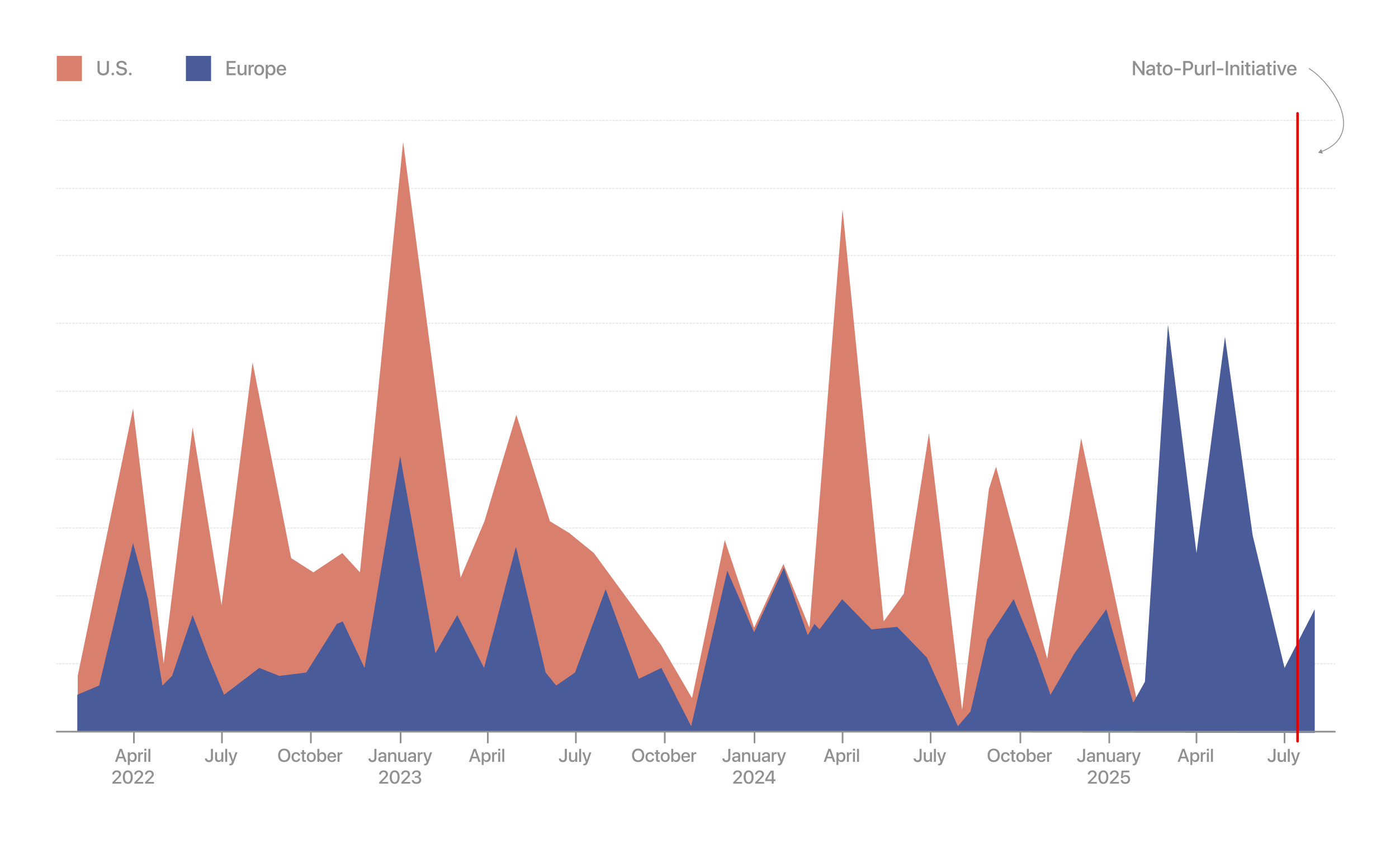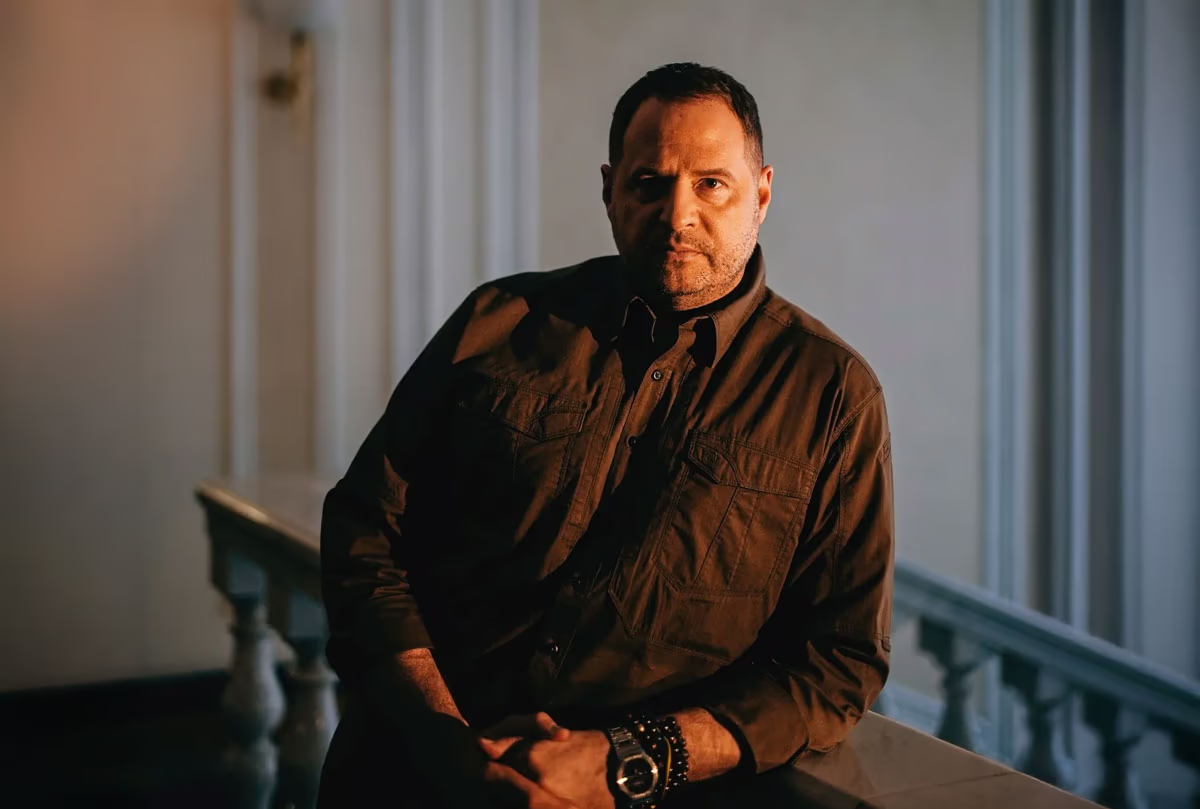The Swiss newspaper Neue Zürcher Zeitung reports that Ukraine is entering its fourth winter of war while facing a sharp decline in Western support. Despite new NATO initiatives, military aid is decreasing, and many European countries are using only a fraction of their potential.
The NZZ analysis comes amid growing diplomatic uncertainty: Donald Trump has refused to provide Ukraine with Tomahawk missiles, citing a priority for diplomacy. He also confirmed a meeting with Vladimir Putin in Budapest, while former British Field Marshal David Richards warned that Ukraine cannot win without direct NATO involvement.
Against this backdrop, Neue Zürcher Zeitung emphasizes that the decline in European aid reflects the weakening of the West’s political will.
As the fourth winter of war approaches, Volodymyr Zelensky once again finds himself pleading for Western support. According to Neue Zürcher Zeitung, although several NATO countries have announced new arms deliveries, these decisions followed months of visible decline in military assistance.
Level of Support for Ukraine by the U.S. and European Countries

Ukraine’s main donor—the United States—has not allocated any new tranches of military aid since late January, when Donald Trump returned to office. Unlike in previous pauses, Europe managed to partly fill the gap during the first half of the year. However, many critical types of weaponry remain out of reach for the continent—either due to technological limits or a lack of production capacity. The dependency is particularly evident in rocket artillery systems, artillery shells, and air defense equipment.
In July, NATO launched the Purl initiative, designed to allow member states to purchase weapons for Ukraine on the U.S. market and quickly transfer them to Kyiv. At the top of Ukraine’s priority list are American Tomahawk missiles, capable of striking targets deep inside Russian territory.
However, the initiative has not produced the expected acceleration in deliveries. On the contrary, according to Neue Zürcher Zeitung, the volume of military aid has sharply declined in recent months. During the summer, European countries’ commitments fell by 57 percent compared to the first half of the year—from an average of €3.8 billion to €1.9 billion per month. Overall, the total monthly volume of military support from all donors was about 40 percent lower than during the first six months.

A Power Struggle at the Expense of Defense
At a Critical Moment in the War, the State Is Focused on Reallocating Authority

How Ukraine Entered the Talks in Its Weakest Position
Corruption, Impunity, and Populism Proved as Damaging as the War With Russia
A New Attempt to Revive the Purl Initiative
At last Wednesday’s NATO defense ministers’ meeting, Secretary General Mark Rutte sought to breathe new life into the Purl initiative. As Neue Zürcher Zeitung reports, he called it a success that “more than half of the allies” — at least sixteen member states — are ready to join.
Denmark, Norway, Sweden, Latvia, Germany, the Netherlands, Belgium, and Canada have already purchased weapons in the United States worth €1.9 billion. All of these countries rank among the leading European providers of military support to Ukraine, many of them doing so for several consecutive years. The consistent contributions from the Nordic states are particularly notable, as they continue to supply Ukraine with arms and equipment on a steady basis.
Some of these countries go beyond overseas purchases and donate from their own stockpiles. Denmark, for example, has transferred its entire artillery inventory to Kyiv and became the first country to sign an enhanced defense agreement with Ukraine. Under the so-called “Danish model,” Copenhagen places orders directly with Ukrainian manufacturers to ensure that deliveries reach the front line as quickly as possible.
France and Spain have adopted a different approach: they also cooperate with Kyiv in the defense sector but do so through their national companies, and the scale of their involvement is considerably smaller — as is that of most Southern European states.
Neue Zürcher Zeitung notes that France, Spain, and Italy act much more cautiously and therefore are less often targeted by Russian provocations. While Denmark, Poland, the United Kingdom, and Germany have recently faced such incidents, for Paris, Rome, and Madrid the threat remains largely theoretical.
Southern European Stockpiles and Untapped Potential
However, it is precisely the Southern European countries, Neue Zürcher Zeitung emphasizes, that still possess comparatively full weapons stockpiles. Unlike the Baltic states, Poland, and the Czech Republic — which transferred a large share of their arsenals to Ukraine in the early months of the war and are now limiting supplies to strengthen their own defenses — the Southern European nations have sent Kyiv only a small fraction of their heavy weaponry.
At the same time, it would be easier for them to replenish their inventories or expand production: their defense industries are among the most profitable on the continent, and their economies are some of the largest in Europe. The gap between their potential and their actual support for Ukraine is therefore particularly striking.
Neither Paris, Rome, nor Madrid has shown any sign that the situation will change in the near future. France is consumed by an internal political crisis, the Spanish authorities are focused on security in North Africa, and Italy’s Prime Minister Giorgia Meloni—though declaring support for Ukraine—leads a coalition with Forza Italia and Lega, whose leaders took openly pro-Russian positions at the beginning of the war.
According to Neue Zürcher Zeitung, the untapped potential of European support for Ukraine is evident across the continent. Even after nearly four years of war, EU spending on Ukraine remains far below the sums allocated to fight the COVID-19 pandemic or to stabilize the eurozone. To rebuild the economy after the pandemic, Brussels allocated roughly €810 billion; during the debt crisis, around €400 billion. By comparison, assistance to Ukraine so far amounts to only about €215 billion.
